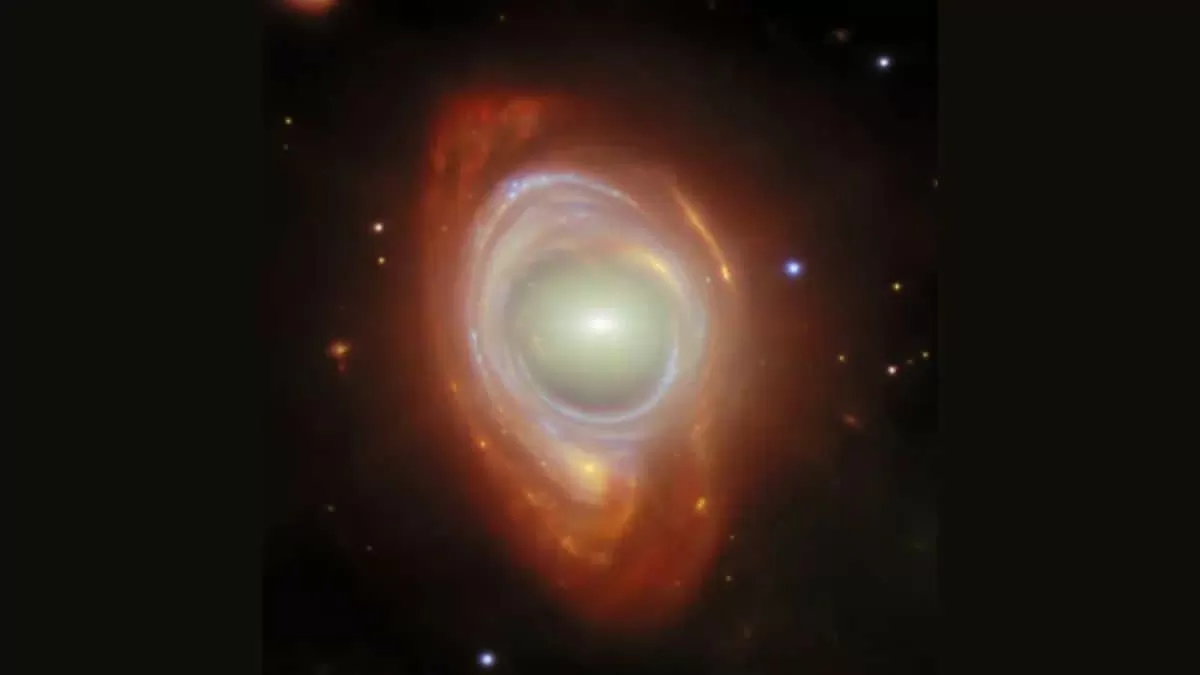A new image captured by the James Webb Space Telescope has revealed a breathtaking sight in the Hydrus constellation – an Einstein ring. This phenomenon occurs when a massive foreground galaxy bends light from a hidden background galaxy, forming a near-perfect ring. The image has left astronomers and space enthusiasts in awe, as it not only showcases the beauty of the universe, but also provides valuable insights into the early stages of galaxy formation.
The James Webb Space Telescope, also known as JWST, is a joint venture between NASA, the European Space Agency, and the Canadian Space Agency. It is set to be the successor of the iconic Hubble Space Telescope and is expected to revolutionize our understanding of the universe. With its advanced technology and powerful instruments, the JWST is able to capture images that were previously impossible to obtain.
The recently released image from the JWST shows an Einstein ring in the Hydrus constellation, a rare and fascinating phenomenon. The ring is formed when the light from a distant galaxy is bent in a circular shape by the gravity of a massive galaxy in front of it. This creates a perfect ring of light, with the hidden galaxy located at the center. The effect is one of the many predictions of Albert Einstein’s theory of general relativity, which has been proven time and again by various astronomical observations.
What makes this image even more remarkable is the fact that it allows astronomers to study galaxies from the early universe. The light from the background galaxy has been traveling for billions of years before reaching our telescopes, giving us a glimpse into the distant past. By studying this hidden galaxy, astronomers can gain valuable insights into how galaxies formed and evolved in the early stages of the universe. This is a crucial piece of the puzzle in understanding the origins of our own galaxy, the Milky Way.
The Hydrus constellation is located in the southern sky and is not visible from most of the northern hemisphere. This makes the discovery even more special, as it highlights the importance of international collaborations in the field of astronomy. The JWST is a testament to the power of global partnerships and the advancements that can be achieved when nations come together to explore the mysteries of the universe.
The image has also sparked excitement within the scientific community, with astronomers eager to study the Einstein ring in more detail. The JWST’s powerful instruments will allow them to analyze the light from the hidden galaxy and gather information about its properties, such as its age, size, and composition. This will provide crucial data for researchers to further their understanding of galaxy formation and evolution.
The release of this image is a reminder of the immense potential of the James Webb Space Telescope. It is set to open new doors and push the boundaries of our knowledge about the universe. With its ability to capture images with unprecedented clarity and detail, the JWST is a game changer in the world of astronomy.
The Einstein ring in the Hydrus constellation is just the beginning of the incredible discoveries that the JWST is expected to make. As it continues to orbit around the Earth and gather more data, we can only imagine the mind-blowing images and insights that it will reveal. The telescope has already proven its worth with this striking new image, and we can’t wait to see what else it has in store for us.
In conclusion, the James Webb Space Telescope has once again amazed us with its latest image of an Einstein ring in the Hydrus constellation. This rare and captivating phenomenon not only showcases the beauty of the universe but also helps us understand the early stages of galaxy formation. The image is a testament to the power of international collaborations and the incredible advancements that can be achieved through technology. The JWST has opened a new chapter in our exploration of the universe, and we are excited to see what it will reveal next.

